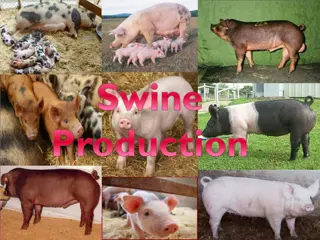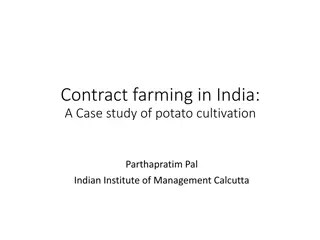
A Guide to Elderberry Farming in India, Sonalika Tiger Sonalika Sikander Sonalik
The trend of elderberry farms is emerging in India as many industries, including the pharmaceutical, food, and cosmetics industries, have increased their demand for elderberry. The high content of elderberries in antioxidants, vitamins, and other beneficial nutrients powers the applications for health and wellness products. If you are thinking about elderberry cultivation in India, the following t
Download Presentation

Please find below an Image/Link to download the presentation.
The content on the website is provided AS IS for your information and personal use only. It may not be sold, licensed, or shared on other websites without obtaining consent from the author. If you encounter any issues during the download, it is possible that the publisher has removed the file from their server.
You are allowed to download the files provided on this website for personal or commercial use, subject to the condition that they are used lawfully. All files are the property of their respective owners.
The content on the website is provided AS IS for your information and personal use only. It may not be sold, licensed, or shared on other websites without obtaining consent from the author.
E N D
Presentation Transcript
A Guide to Elderberry Farming in India The trend of elderberry farms is emerging in India as many industries, including the pharmaceutical, food, and cosmetics industries, have increased their demand for elderberry. The high content of elderberries in antioxidants, vitamins, and other beneficial nutrients powers the applications for health and wellness products. If you are thinking about elderberry cultivation in India, the following tips might be helpful for you in making this venture a success. Elderberry Farming Process in India Selecting the Right Location: Elderberry plants require humid temperature zones, the ground having excellent drainage and sufficient sunshine to thrive. Select a place with good air circulation to resist diseases. Highlands with mild temperature conditions and moderate precipitation are ideal for elderberry growing. Soil Preparation: Elderberries require well-drained loamy soil. Conduct a soil test to find out the nutrients and pH profile of the soil. Include organic materials like compost or well-rotted manure to increase the soil fertility and structure. Consider using the Sonalika Tiger Make sure you have a proper drainage system to avoid waterlogging, which can cause root rot.
Variety Selection: Pick elderberry types that are suitable for your area's climate and soil. Some of the popular varieties are Adams, York, Johns, and Nova. Taking into account the fruit size, potential yield and disease resistance, choose the variety. Propagation: Elderberry can be propagated from seeds, cuttings or suckers. Propagation from cuttings usually comes first and gives rise to earlier growth and fruit harvesting. Take hardwood cuttings from healthy, pest and disease-free plants during the dormant period and plant them in good soil. Planting: Plant your elderberry cuttings or seedlings in late winter or early spring when the soil is moist, the temperature is cool, and the environment is relatively humid. Create space beet-root plants 6 to 8 inches apart but ensure that there are at least 10 to 12 inches between rows to enable proper air circulation and growth. Drench them well down and then mulch around their base to stop the water from escaping and minimize the weeds.
Watering and Fertilization: The elderberry has a moderate water need but should be watered a little more in the hot periods and when the plant has the most fruits. Apply a mixed fertilizer that is rich in nitrogen, phosphorous and potassium in a quantity that the soil test has recommended. For applying fertilization farmers can use Sonalika Sikander for higher efficency for various farming tasks.
Pest and Disease Management: To avoid pest outbreaks, elderberry plants should frequently be inspected for aphids, spider mites, and Japanese beetles. Take advantage of cultural technologies - sanitation and crop rotation- for instance, to decrease the pest population. Try to avoid pesticides when possible. Make use of natural pest control methods such as insecticidal soap or neem oil if the situation demands it, along with Sonalika Baagban tractor.






















